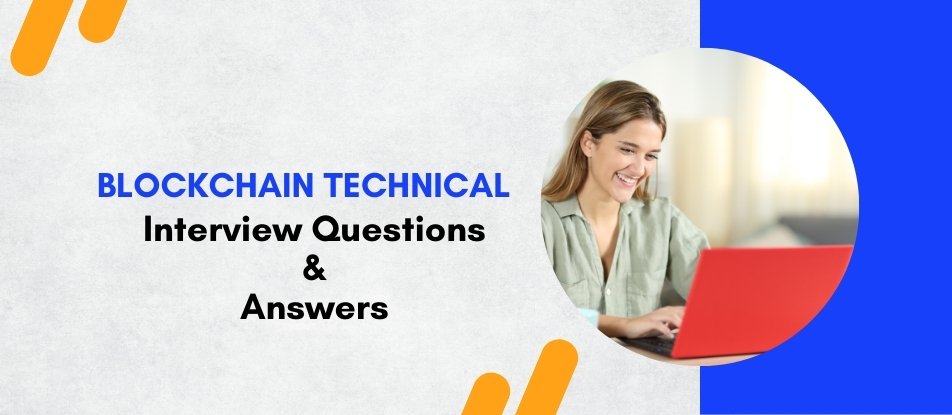
Dive into the world of blockchain with our Blockchain Technical Course. This comprehensive training covers fundamental concepts like blockchain architecture, consensus mechanisms, and smart contracts. Participants will gain hands-on experience with real-world applications, learn about blockchain security, and explore advanced topics such as decentralized finance (DeFi) and blockchain scalability solutions. Suitable for IT professionals aiming to leverage blockchain technology in their practices, this course prepares you for a future in blockchain innovation.
Blockchain Technical Interview Questions Answers - For Intermediate
1. What are oracles in blockchain?
Oracles are third-party services that provide smart contracts with external information. They serve as bridges between blockchains and the outside world. Oracles are necessary for many contract applications, but they also represent a point of vulnerability.
2. What challenges does blockchain face with scalability?
Blockchain faces scalability issues primarily due to the limitations in the size of blocks and the rate at which transactions are added to the blockchain. As the number of users and transactions increases, the demand on network resources grows, which can lead to slower transaction processing times and higher costs.
3. How does blockchain handle privacy issues?
While blockchain is inherently transparent, there are technologies such as zero-knowledge proofs that allow for transaction validation without revealing sensitive information about the parties involved. Additionally, some blockchains are designed with privacy in mind, using various cryptographic techniques to enhance user anonymity.
4. What is gas in the context of Ethereum?
In Ethereum, gas refers to the unit that measures the amount of computational effort required to execute operations like transactions or smart contracts. Users must pay gas fees to compensate for the computing energy required to process and validate transactions on the Ethereum network.
5. How does blockchain technology impact the financial services industry?
Blockchain technology introduces improvements in transparency, efficiency, and security in financial services. It can reduce fraud, enable faster transactions, lower costs by eliminating middlemen, and provide unalterable transaction records.
6. What is the significance of the Genesis Block?
The Genesis Block is the first block of a blockchain. In many cases, such as with Bitcoin, it is hard-coded into the software of the application. It is significant as it symbolically represents the beginning of the blockchain, and in technical terms, it is used as a reference for subsequent blocks.
7. Can you explain the concept of blockchain immutability?
Immutability in blockchain refers to the characteristic that once data has been written to the blockchain, it cannot be changed or deleted. This is achieved through cryptographic hash functions and the decentralized consensus mechanism, making tampering with blockchain data extremely difficult and easily detectable.
8. What is a blockchain node?
A node in a blockchain is a point of connection that has a copy of the ledger and participates in the blockchain's functioning either by storing data, validating transactions, or contributing to the consensus process. Nodes are crucial for the decentralization and security of the blockchain.
9. What are sidechains and how do they work?
Sidechains are separate blockchains that are attached to a parent blockchain using a two-way peg. They allow for assets and other data to be exchanged between the main blockchain and the sidechain, enabling more flexibility and scalability while maintaining the security of the main chain.
10. How do consensus mechanisms differ between Bitcoin and Ethereum?
Bitcoin uses a Proof of Work (PoW) mechanism which requires significant computational power to mine blocks. Ethereum, however, is transitioning from PoW to Proof of Stake (PoS), which selects validators in proportion to their holdings and does not require intensive computational work.
11. What are the risks associated with blockchain technology?
Risks include potential security flaws, the possibility of 51% attacks, regulatory uncertainty, and scalability issues. Despite the security features of blockchain, its software and the applications built on top of it can still be vulnerable to exploitation.
12. What is a Merkle tree and its function in blockchain?
A Merkle tree is a data structure used in blockchains for efficiently summarizing and verifying the integrity of large sets of data. Each leaf node is a hash of transaction data, and each non-leaf node is a hash of its child nodes. This structure allows for quick and secure verification of transaction contents.
13. How does the Lightning Network work?
The Lightning Network is a second-layer protocol on top of Bitcoin's blockchain. It enables instant, high-volume micropayments between participating nodes. It works by allowing participants to create payment channels that are only settled on the blockchain when they are closed, reducing the load on the main blockchain.
14. What are the ethical considerations of blockchain technology?
Ethical considerations include privacy concerns, the environmental impact of high-energy-consuming consensus mechanisms like PoW, and the potential for blockchain to be used for illicit activities due to its anonymity features.
15. What future developments are expected in blockchain technology?
Future developments may include more widespread adoption of blockchain for various applications, improvements in scalability and privacy through new consensus mechanisms and cryptographic methods, and greater integration with other emerging technologies like AI and IoT, potentially leading to more innovative solutions and increased efficiency across industries.
Blockchain Technical Interview Questions Answers - For Advanced
1. What are the potential applications of blockchain in healthcare?
Blockchain technology has the potential to revolutionize healthcare by enhancing the security, privacy, and interoperability of health data. It can provide a decentralized framework for sharing medical records securely among various stakeholders, ensuring data integrity and patient privacy. This can facilitate more accurate diagnoses, faster and more effective treatment, and overall improved patient outcomes. Additionally, blockchain can streamline administrative processes in healthcare, reduce costs, and improve the traceability of pharmaceuticals and medical supplies to combat counterfeiting.
2. Discuss the evolution of blockchain platforms from Bitcoin to Ethereum to third-generation networks like Cardano and Polkadot.
The evolution of blockchain platforms began with Bitcoin, which introduced a decentralized ledger for tracking digital currency transactions using a proof-of-work consensus mechanism. Ethereum expanded on this by incorporating smart contracts that allow for programmable transactions and decentralized applications, marking a significant advancement in the utility of blockchain technology. Third-generation networks like Cardano and Polkadot have further evolved the concept by addressing issues such as scalability, interoperability, and sustainability. Cardano uses a proof-of-stake consensus mechanism designed to be more energy-efficient, while Polkadot focuses on enabling different blockchains to interoperate seamlessly, facilitating a web of interconnected networks.
3. How does blockchain contribute to the concept of a decentralized internet, or Web 3.0?
Blockchain is a foundational technology for Web 3.0, envisioned as a decentralized and open web where users have control over their own data, identity, and transactions. By providing a secure, transparent, and censorship-resistant infrastructure, blockchain enables the creation of decentralized applications (dApps) that operate on peer-to-peer networks rather than central servers. This shifts the control from central authorities and tech conglomerates to the users themselves, potentially reducing data breaches, enhancing privacy, and democratizing access to information.
4. What role does blockchain play in enabling digital identity systems?
Blockchain can play a pivotal role in creating digital identity systems that are secure, efficient, and user-controlled. By leveraging blockchain, digital identities can be uniquely verified in a tamper-proof public ledger, enhancing security and reducing the risk of fraud. This system allows individuals to own and control their personal data, selectively sharing information through cryptographic keys without relying on centralized identity providers. Such systems could transform various sectors, including finance, healthcare, and education, by making identity verification processes more straightforward and secure.
5. Explain the impact of blockchain on cross-border payments and the potential challenges in this area.
Blockchain significantly impacts cross-border payments by enabling faster, cheaper, and more transparent transactions compared to traditional banking systems. By eliminating the need for intermediaries, blockchain can reduce transaction times from days to minutes or even seconds, while also decreasing transaction fees. However, challenges include regulatory differences between countries, the need for widespread adoption, and concerns about the volatility of cryptocurrencies used for transactions. Overcoming these challenges requires cooperation among international regulators and further development of stablecoins and other blockchain-based payment systems.
6. How does blockchain technology assist in anti-money laundering (AML) efforts?
Blockchain technology assists in anti-money laundering by providing an immutable and transparent record of all transactions. Each transaction is traceable, permanent, and publicly verifiable, which helps regulatory bodies and financial institutions monitor and analyze transactions to detect patterns indicative of money laundering. Furthermore, the use of smart contracts can automate compliance processes, such as KYC (Know Your Customer) procedures, making it more difficult for illicit activities to go unnoticed. However, the pseudonymous nature of transactions can pose challenges, necessitating advanced analytics and regulatory technologies to effectively leverage blockchain in AML efforts.
7. What are the environmental impacts of blockchain, particularly regarding proof of work systems?
The environmental impact of blockchain, especially those utilizing proof of work systems, is significant due to the high energy consumption required for mining activities. Mining involves solving complex cryptographic puzzles to validate transactions and add new blocks to the blockchain, a process that requires substantial computational power and, consequently, electricity. This has raised concerns about the carbon footprint of cryptocurrencies like Bitcoin. In response, there are growing calls for more sustainable practices within the industry, such as the adoption of more energy-efficient consensus mechanisms like proof of stake, and the use of renewable energy sources for mining operations.
8. Discuss the potential of blockchain in electoral systems and the barriers to its implementation.
Blockchain has the potential to transform electoral systems by making voting more accessible, transparent, and secure. The technology can ensure that votes are cast anonymously, counted accurately, and are tamper-proof once recorded. Blockchain could also enable remote voting, expanding voter participation. However, barriers to implementation include the need for digital literacy, robust cybersecurity measures to prevent hacking, the challenge of voter verification while maintaining anonymity, and the lack of a legal framework specifically addressing digital voting systems.
9. Explain how blockchain can be used in copyright and intellectual property protection.
Blockchain can enhance copyright and intellectual property protection by providing a transparent and immutable registry for copyrights and intellectual property (IP) rights. It allows creators to timestamp and register their works on a blockchain, which helps in proving ownership and copyright dates in a cost-effective and tamper-proof manner. Additionally, smart contracts can automate royalty payments when copyrighted works are used, ensuring creators are compensated fairly and promptly. This application of blockchain not only streamlines copyright management but also significantly reduces the potential for disputes and infringement.
10. What are the implications of blockchain for disaster recovery and business continuity planning?
Blockchain technology can significantly enhance disaster recovery and business continuity planning by providing a decentralized infrastructure that is resistant to single points of failure. In the event of a disaster, data stored on a blockchain remains safe and accessible due to its distribution across multiple nodes. This ensures that operations can resume quickly and data integrity is maintained, which is crucial for recovery processes. Furthermore, smart contracts can automate certain recovery actions, speeding up response times and reducing human error in high-stress situations.
11. Discuss the concept of blockchain bridges and their significance in the ecosystem.
Blockchain bridges, also known as cross-chain bridges, are protocols that allow the transfer of assets and information between different blockchain networks. This is significant as it addresses one of the fundamental limitations of earlier blockchain implementations: the inability to communicate or interoperate with other blockchains. Bridges enhance the functionality and utility of blockchain networks by enabling users to leverage the strengths of multiple blockchains, fostering a more interconnected and flexible ecosystem. However, they also introduce security challenges, as the bridge itself can become a target for attacks, as seen in several high-profile bridge exploits.
12. Evaluate the role of blockchain in the future of decentralized data storage.
Blockchain could play a transformative role in the future of decentralized data storage by providing a secure, reliable, and censorship-resistant alternative to traditional cloud storage solutions. Decentralized storage solutions on blockchain distribute data across a network of nodes, ensuring there is no single point of failure and reducing the risk of data loss or tampering. Furthermore, encryption and the inherent immutability of blockchain enhance the security of stored data. The use of tokenization for data access and the economic models built around blockchain protocols can incentivize network participation and data redundancy, potentially leading to more robust and resilient data storage systems.
13. How does the concept of decentralized autonomous organizations (DAOs) work on blockchain?
Decentralized Autonomous Organizations (DAOs) are organizations represented by rules encoded as a computer program that is transparent, controlled by organization members, and not influenced by a central government. DAOs are the most effective means of managing a common fund without any traditional management structure. Transactions and rules are recorded on a blockchain, making them immutable and transparent to all members. DAOs operate using smart contracts which automate organizational governance and decision-making processes, potentially reducing human error and manipulation.
14. What are the challenges and potential solutions in scaling blockchain technology?
One of the main challenges in scaling blockchain technology is maintaining high transaction throughput with increased user adoption. Current blockchain networks like Bitcoin and Ethereum can handle only a fraction of the transactions per second compared to traditional payment networks like Visa. Potential solutions include layer-two scaling solutions, such as state channels or plasma chains, which can handle transactions off the main blockchain, and sharding, which splits the database horizontally to spread the load. Each approach has trade-offs in terms of security, decentralization, and complexity.
15. Explore the impact of blockchain on the globalization of economies.
Blockchain can significantly impact the globalization of economies by making cross-border transactions more efficient, secure, and transparent. By enabling seamless transactions without the need for intermediaries, blockchain technology can reduce costs and time associated with international trade. Additionally, blockchain can provide small and medium-sized enterprises easier access to global markets by simplifying processes and ensuring compliance through smart contracts. However, the widespread adoption of blockchain in global trade would require harmonization of regulations and standards across jurisdictions, which remains a significant challenge.
Course Schedule
| Dec, 2025 | Weekdays | Mon-Fri | Enquire Now |
| Weekend | Sat-Sun | Enquire Now | |
| Jan, 2026 | Weekdays | Mon-Fri | Enquire Now |
| Weekend | Sat-Sun | Enquire Now |
Related Courses
Related Articles
Related Interview
- DevOps Training Interview Questions Answers
- Ansys Training Interview Questions Answers
- Microsoft 365 Copilot for Adaptive Manager Training Interview Questions Answers
- IBM Case Manager Essentials Training Interview Questions Answers
- ASME B31.3 Process Piping Design Code Training Interview Questions Answers
Related FAQ's
- Instructor-led Live Online Interactive Training
- Project Based Customized Learning
- Fast Track Training Program
- Self-paced learning
- In one-on-one training, you have the flexibility to choose the days, timings, and duration according to your preferences.
- We create a personalized training calendar based on your chosen schedule.
- Complete Live Online Interactive Training of the Course
- After Training Recorded Videos
- Session-wise Learning Material and notes for lifetime
- Practical & Assignments exercises
- Global Course Completion Certificate
- 24x7 after Training Support


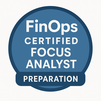


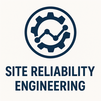
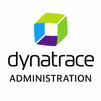
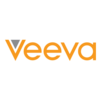




 Join our Live Instructor-Led online classes delivered by industry experts
Join our Live Instructor-Led online classes delivered by industry experts